
Our program is empowered by a welcoming and diverse community of students with a uniquely global perspective. Together we are making things right for our communities and our future.
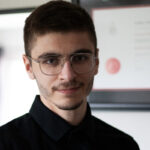
Alexandro Di Nunzio graduated from York University with a Bachelor of Science in Psychology and a Bachelor of Arts in Digital Media, with a specialized honors in Digital Media Game Arts. His primary research interests are in technical art, media signal processing, and multi-user virtual reality applications.
Alexandro’s most recent project was the development and deployment of a web-based educational application built in the Unity Game Engine. This tool is used for teaching engineering students about Earth system science topics by visualizing surface terrain model analysis techniques in a real-time, interactive environment. Functionality includes physics-based water simulations, volumetric cloud rendering, topographic mapping, and common geological measurement techniques.
Alexandro’s current research project in the MA program is on real-time audio analysis and music visualization; he has been developing an audio analysis framework capable of identifying and quantifying discrete qualities in a live music signal, which can then be used to control various visualizations in real-time. Existing prototypes include professional stage lights and rendered visual effects. The final objective of this framework will be to provide a tool for creating procedural, easily accessible alternatives to pre-programmed audio visualizations, which are known to be prohibitively impractical to develop for modest live musical productions.
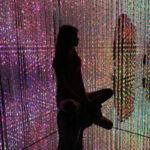
Alice Chai recently graduated with a BA in Digital Media from York University where she became interested in UI/UX design and human-computer interaction. Her research interests lie in user interfaces, human-computer interaction, and interaction design. She is interested in exploring ways to bridge the divide between technology and people, aiming to create more user-friendly and accessible digital experiences. In her free time, she enjoys drawing and painting, further exploring her creative talents and applying them to her work.
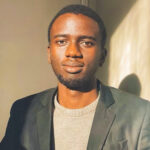
In 2021, Boluwaji, also known as Boma, earned a Bachelor of Science in Architecture from Joseph Ayo Babalola University in Nigeria. As an undergraduate, his love of entrepreneurship inspired him to manage both individual and group projects to promote sustainable growth in his neighborhood, and his final research project looked at the connection between sustainable design and "minimalism." Over the course of his short career as an architect, he has designed buildings and seen how spaces and structures are built from the ground up. His interests are in photography, design, entrepreneurship, and business.
Boluwaji is particularly intrigued by urban design as well as how people perceive and respond to unique design components in architectural spaces. His hunger for creativity has inspired him to experiment with a variety of activities, from writing to graphic design, user experience design, web design, and fashion. His current research interests consider the application of virtual and augmented reality in the architectural understanding of space and its elements, as well as the potential for these technologies to produce immersive and interactive experiences for people.
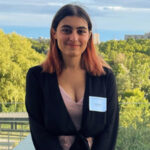
Isabella (Izzy) Missios, is a digital artist and recent graduate from York University's Digital Media BA program at the Lassonde School of Engineering. Her work is focused on creating immersive learning experiences that enable others to understand unique perspectives and abstract concepts more clearly, with a focus on the educational potential of interactive digital media. In her own time, Izzy loves learning new things herself and exploring through outdoor recreational activities like camping, hiking, and wildlife photography. Her love for biology and the natural world greatly defines the themes and approaches she takes in her art.
At York University, Isabella is particularly interested in digital fabrication and educational game design and development. She has experience operating 3D printers on a regular basis and is often looking for new ways to use her skills in 3D design to find unique solutions to problems. She’s a strong proponent of experiential learning and hopes to continue pushing the limits of how digital media can be used as an educational tool
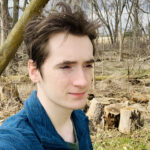
Jacob Brintnell obtained a Bachelor of Global Business and Digital Art from the University of Waterloo and fell in love with accessibility and sharing information. He has experience with content writing and creation, User Experience Design, User Interface and Prototyping, and a large variety of design methods and tools.
Jacob's research interests involve creating accessible experiences and making digital platforms to enable and empower individuals. He has worked on app & product prototypes that focused on balancing experiences. A notable and recent project “Last Call” was a prototype for an app that allowed restaurants and groceries to catalogue excess food that would otherwise get discarded. This allowed for lower-income customers to organize a time to pick up said food for a discounted price, cutting down food waste and giving an option for cheap, nutritional options.
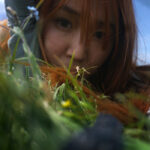
As a Toronto-based artist and recent graduate of Queen's University, my creative journey has been a fusion of cutting-edge technology and traditional artistic forms. I specialize in crafting immersive spaces that seamlessly blend 3D techniques with age-old artistic media. My artistic repertoire spans a diverse range, from 2D hand-made animations to captivating short narrative films, mesmerizing AR & VR artworks, and awe-inspiring immersive space exhibitions.
My most recent project delves into the fascinating realm of digital emotions, exploring the intriguing question of whether offline exhibitions can vividly encapsulate the digital realm's emotional essence. My hypothesis posits that individuals may experience more profound emotions in the tangible, offline world compared to their virtual counterparts. This display aims to demonstrate that regardless of our backgrounds, we all share common emotional experiences.
In my ongoing artistic journey, I aspire to pioneer the fusion of hybrid reality technology with corporeal installation art, marrying data visualization with traditional artistic forms. This exciting venture promises to unlock new dimensions in the realm of art and technology, pushing the boundaries of what's possible in the ever-evolving landscape of creative expression.
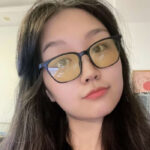
Winnie is a seasoned avant-garde designer. she was awarded the CADA Japan Concept Art Design Award, BRITISH ECOLOGY DESIGN Award, G CROSS Award, EPACC Environmental protection art creation contest, EDA Huacan Award and more. She participated in major projects of the National Social Science Fund of China such as the "Hundred Lights Show" Year of China - Culture and Design Series Exhibition. Furthermore, she has been involved in numerous exhibition designs. For example, the Luo Zhongli Art Museum Collection Exhibition, Design Intervention Precision Poverty Alleviation Exhibition and more. Her recent research interests consist of the application of 3D generative art and programming art in design.
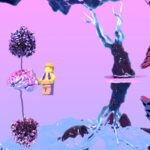
Xiao He is a new media artist/designer and explorer, his research interests lie in interactive contemporary new media and audio-visual art, integrating computer graphic/algorithms and visual art to amplify and discover the possibilities of computational art, as a explorer, he pursues intention, theoretical background and central concepts behind the art creation from diversified thinking directions and realization processes. In his work, media ranging from immersive environments, computer simulations, and user interaction to electroacoustics and experimental music serve as frameworks and modes of expression for presenting meaning and interactive experiences of the audience.
His research explores virtual art exhibitions, amusement park, contemporary art installations, architecture, game engines and computer graphics as well as user-interactive audio-visual spaces and real-time feedback to produce content based on and inspired by the integration and correlation of a diversity of theories and stories, and proceed by computer algorithms, and graphic generators to exhibit concrete spatial presentations.

Xuan Han, and I aim to become a UX Designer or Video Game Designer. His research interests include human-computer interaction, with a hope to tailor video game experiences towards addressing societal conversations in a collaborative gaming environment. Xuan looks forward to creating integrative, thought-provoking virtual reality experiences which combine artistic elements of UX design while pushing the boundaries of human-computer interaction.
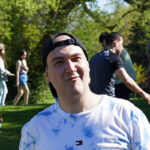
Philip is a recent B.A Digital Media graduate and MSc student at York University. He is always enthusiastic to help others and supports his local community. He strongly believes that creativity can bring people together and create positive changes not only in the world of science but also in everyday life.
Philip is interested in web design and development, human-computer interaction, and IoT. He always aims to be innovative and bring a stronger message with each subsequent project. As a designer and creator, he finds satisfaction in bringing digital landscapes to life. His curiosity extends to exploring the leading digital news, from paying close attention to the dynamically changing web trends to searching through the immersive realm of 3D WebGL and the transformative potential of IoT. He aims to showcase common urban problems such as waste management or noise pollution as well as help break any difficulties to bring innovative technology closer to people who really need it.
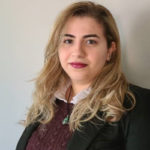
Raghad El-Shebiny, also known as Riggy, is a recent graduate of the Digital Media BA rpogram. When She’s not working or studying, Raghad is usually spending time with her family or friends outdoors or cooking and watching Netflix. She loves being involved in student government and student associations advocating for herself and her peers and organizing events to raise awareness about the field of digital media. Raghad is passionate about finding new ways to help people and give back to their communities. She is a genuine believer in the power of education to help make changes in the world.
While at York University, Raghad has been working with various professors in the Lassonde School of Engineering on projects exploring new ways to present, teach, and assess course material using pre-existing and specially made technology. Raghad’s work with the Lassonde Educational Innovation Studio (LEIS) helped supporting professors with transitioning their courses to an online format when the pandemic started, as well as supporting and setting up professional development workshops for faculty helping tp find new ways of presenting and assessing course content using existing technology.

Zian Liu received his B.Sc. (2020) in computer science from the Lassonde School of Engineering, at York. Liu is a scientific researcher whose projects mainly focus on interactive entertainment such as traditional PC games, experimental VR and AR applications. In the summer of 2021, Liu joined one of the R&D teams of Tencent Games, which is responsible for producing virtual idols and virtual production. His work has been used to facilitate a number of live events with Tencent's subsidiary game studios and game products such as PUBG Mobile and Arena of Valor.
Since motion capture for gaming will be the significant component in virtual worlds such as the Metaverse, Liu's research project proposes replacing the traditional mocap commodities with an advanced, economical CV-based multi-person pose estimation solution. By integrating the CV-based 3D multi-person pose estimation into the game engine, the project will have a chance to explore the possibilities and opportunities of combining VR and this new technology which may soon become a common feature in the game world.
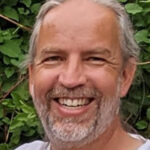
Andrew McConnell, a member of Nipissing First Nation and Toronto resident, boasts nearly 20 years of experience in education, merging technology and Indigenous teaching. He is working to reimagine STEM education for Indigenous youth, integrating traditional knowledge and experiences to challenge the conventional STEM approach in secondary schools that does not connect to Indigenous realities. His work looks to connect students with community knowledge keepers, preserving local languages and historical knowledge of the land. By connecting these stories with digital mapping and data visualization, he is looking to preserve knowledge in the community that can be shared with others to promote a better way of living with the world.
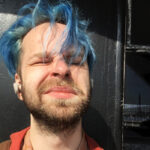
Evgeni Puzankov is an award-winning veteran game developer, digital artist, narrative designer, curator, and teacher from St. Petersburg, Russia. Highlights of his work include microfund Briefs, Duck Date, Baby Labor, Song of Farca, The Long Reach, Absurd Games summit and thesis, and Save Koch. His research at York U is focused on Formal and Political Dissent in Interactive media.

Eyal is a veteran of the 3D and VFX industry, an author, technical artist and a professor. He is currently teaching and coordinating in the undergraduate and postgraduate Gaming streams at the Seneca@York campus.
His doctoral research is focused on the technical generation of non-humanoid game creatures and procedural game worlds. He is also exploring the portrayal of monsters and other fantastic creatures, and their symbolic role as narrative agents in video games.
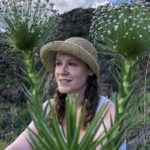
Grace Grothaus is a computational media artist grappling with the climate crisis. Her practice-based artistic research encompasses environmental sensing, physical computing, algorithmically generated imagery, and speculative futurity. Her projects take the form of interactive or responsive indoor and outdoor installations, and performances. Grothaus' artwork has been exhibited around the world, including the International Symposium of Electronic Art, Environmental Crisis: Art & Science in London, UK, Cité Internationale des Arts in Paris, and the World Creativity Biennale in Brazil. Grothaus has received awards for her work from organizations such as the National Foundation for Advancement in the Arts in the United States and was an Art 365 Fellow. She has been invited to speak about her work for the University of California San Diego's Design@Large series and Ecoartspace in Santa Fe among others.
Grothaus’ research questions center around the present and future global climate crisis. She is deeply concerned with the question of how to foster empathetic ecosystemic relationships between one another and our more-than-human environs. Can environmental sensing and visualization artworks act as an empirical interface for grasping our complex, interwoven, beyond-human ecologies of present-day earth and inspire new ways of thinking about them? If so, might they lead to novel methods for response and environmental engagement with the ongoing event of climate change? She is exploring how environmental sensing and visualization wearables, installations, and performances may empower citizen-sensing scenarios which expand capacities and processes and form new ways of articulating “sites” within practices of environmental monitoring. She aims to create works that hold space for future-facing reflection regarding human agency enacted through the constructed world and are generative of imagined alternatives.
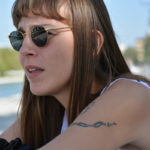
Hrysovalanti Fereniki Maheras holds a B.A. Hons in Media Arts from Plymouth University, UK and an M.A. in Digital Media from York University, CA. She is currently a researcher at n-D::StudioLab. In her research, she speculates on the innovation of computational machines as emotional beings, as she navigates the connections between the philosophical theories written about the human soul, and the cybernetic theories and artworks created for the exploration of the mind of technology. Her practice emphasizes the creation of groups of electronic sound/kinetic sculptures that act as artificially living communities. Traversing both virtual and physical worlds, she explores the creation of a virtual analog environment emerging in a shared complex physical habitat.
Project: Thumos is an artwork made of an array of five free-standing interactive sculptures. The word thumos, or spiritual Eros, is an ancient Greek word used by Plato in his book The Symposium to describe the part of the human soul that translates to the whole of emotions. I am influenced by Plato’s approach to the study of the human soul as an analogy for understanding the mind and desire of the future of the computing machine by preconceiving the rise of mechanical beings and speculating on what they could be. The process of the creation of the artwork Thumos follows a research-creation methodology that focuses on the attunement of natural and artificial organisms in a digitally modulated physical habitat. In the Thumos habitat, a community of synthetically emotive sculptures negotiate the transference of artificial emotional states through stochastic dialogues. The dialogues unfold in a charged environment, where the simulated desires and thoughts of the sculptures generate light and sound events. My effort has been to incorporate the capacity of humans to entrain their emotions towards positively charged emotional states in an interactive installation that invites people to co-create with the synthetically emotive sculptures the experience of the Thumos installation. It is in this spirit that my work uses a speculative approach to create an alternative eco-systemic framework for art making based on cybernetic theories and philosophy as its basis.
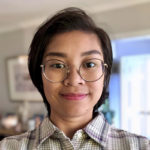
Janica Olpindo is a queer Filipina artist and researcher who immigrated to Toronto, Canada in 2007. She has a BFA in Integrated Media from OCAD University and an MA in Digital Media from York University. Ideas within Olpindo's recent work stem from her interest in mechanical systems within breaking (or "breakdancing") and machines, as well as her interest in human-computer interaction. Olpindo works with electronics, digital media, and installation.
Her current research, Breaking Barriers: Transforming Breaking Movements and its Culture is focused on increasing the sense of inclusion in the culture and practice of breakdancing. The work applies interactive machine learning and methods from dance training to “breaking", with the goal of creating “interactive spaces” that invite movements and expressions by participants of diverse gender, sexuality and abilities that might otherwise feel excluded from these performance spaces. The project builds from Janica’s personal relationship to the “b-girl” culture in Toronto, and will further provide training in the rigorous use of technological and scholarly methods to affect positive societal change. The project is expected to benefit both this particular community, and more broadly provide an example of an inclusive and ethical use of artificial intelligence and machine learning in embodied, communal social spaces.
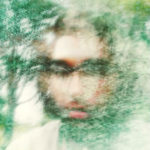
Kieran Maraj is a Toronto-based performer and researcher of electronic music. He builds and plays custom instrumental systems that focus on gestural performance, machine collaboration, and realtime improvisation. Through his practice he has been exploring the relationship between sound, music, and technology for over a decade. He is interested in the expressive possibilities and collective experiences afforded by technological systems and is an active member of the Dispersion Lab.
Kieran’s current research is focused on machine extension, augmentation, and collaboration in both solo and collective music making practices. What becomes possible when control of a sonic performance is a process of negotiation between humans and machine agents? What can a machine add to a musical performance that a human cannot, and how can these differing agencies create a cohesive whole? This exploration involves the use of machine learning technologies in realtime improvisatory settings and the construction of complex interactive sonic systems.
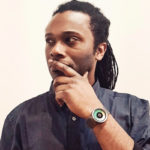
Marcus A. Gordon is a PhD student in computational arts with a research focus on live coding performance and archimusic as modes of interdisciplinary practice. His work seeks to explore the dynamic relationship between architecture and the ecology of eversive virtuality, a concept that describes the presence of immateriality in physical space.
His research at the n-D::StudioLab embodies an exploration into algorithmic composition processes, but also in the making of instruments for both expression and analysis. In direct relation to his dissertation research, this exploration begets a narrative around the epistemological nature of live coding and how he intends to apply it to academic research of systems that further the understanding of human association to nature.
Marcus holds an MFA in Digital Futures from OCAD University where he learned holography, data visualization and began his research on the subject of the transplane image. His master's thesis Habitat 44º sparked a research interest in the relationships between energy and information, and laid a groundwork for his research into the concept of material energies.
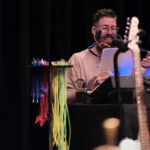
Michael Palumbo (MA, BFA) is a musician, community builder, teacher, and programmer. A PhD candidate in Digital Media at York, he is researching electroacoustic music improvisation in online, multiplayer virtual reality with the XR app “Mischmasch”.
Michael often performs with a modular synthesizer as a soloist and in ensembles. He is the founder and artistic director of the popular Exit Points electroacoustic free-improvisation concert series and runs the Exit Points record label. As a composer, selected works include Data Issues: Please See Attachment (2017); performance video games Recursive Writing (2015) and Stethoscope Hero (2014); and electroacoustic compositions CrossTalk (2013), Soup Phase (2013) and Iron Harvest (2012). Michael has been active in telematic music for more than a decade and was the executive producer of the distributed performance concert Telematic Embrace: You Had Me at Hello World (2014) which was presented at the 137th Audio Engineering Society Convention in New York. He teaches sound and video art at York University, creative coding with javascript at the Ontario College of Art and Design, and private lessons in coding and music.
Michael is interested in creating intersections between community building, mutual aid, and the performance of free-improvisation music.
More of his work can be found at linktr.ee/michaelpalumbo or on Instagram at @michaelpalumbo_
Image credit Mike Filippov 2023.
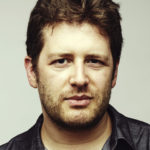
Nick Fox-Gieg is an experimental animator in Toronto. His awards include a 2017 Engadget Alternate Realities grant, Eyebeam and Fulbright Fellowships, and Best Animated Short at SXSW 2010; his XR work includes projects for the Verizon 5G EdTech Challenge, NYT T Brand Studio, Google Creative Lab, and Framestore. His research integrates live-action volumetric video and 6DoF drawing tools, with the goal of creating a complete open-source pipeline for hand-drawn 3D animation.
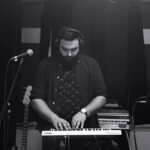
After completing his undergraduate degree in music and masters in ethnomusicology, Omar Shabbar moved to Digital Media to continue his studies with a Ph.D. His research focuses on player perception, acoustics, and instrument materiality. Omar continues his pursuits as a gigging musician, touring with several acts across Canada. His experience as a gigging musician and as an academic work together to inform his work in the lab and on the stage.

Racelar Ho is an artist, theorist, curator, and founder of the IVAS art group. She earned bachelor’s and master’s degrees in Architecture and Landscape Design and Experimental Art from Guangzhou Academy of Fine Arts. Her artistic practice and scholarly research focus on the significance and influence of contemporary, post-human aesthetics on emerging virtual environments’ somatic and spatial geographies. Infinite virtual environments, constructing worlds of poetic thoughts and Zen dialogues in different dimensions, and exploring idealistic and transcendent worlds of vitality are some of the ways she has explored these ideas.
As a fellow facilitator of interdisciplinary discourse, she founded an international Art-Sci group (IVAS) in 2017. To create a new visual and creative production, IVAS explores the relationship between an audio-visual media form and a physical and virtual space and reframes contemporary issues through hybrid and interdisciplinary visual forms. She is currently leading a multi-disciplinary art team working on mixed-reality and multi-sensory game art projects related to climate change, the post-human technoscape and spatial rhetorics research.
Racelar Ho's theoretical work and artistic practice are centred on (post-human and contemporary) rhetorical aesthetics, which is concerned with rhetorical-sociological-somatic-spatial (geographical)-aesthetic issues. She is curious about amplifying the impact of dialogue methodologies between creators and audiences in infinite virtual environments in my work. Her creation also aims to build a hybrid-infinite world to express poetic thoughts about Zen dialogues in different dimensions and explore transcendent beings' idealistic world.
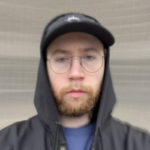
Rory holds an MA and BA Hons in Digital Media from York University, and is a researcher in the DisPerSion Lab. His work explores the crossroads between sonic ecosystems, agent simulation, telematic music, and human/machine collaboration. Exploring the musical potential of artificial life systems, his work places performers alongside virtual beings inspired by natural processes to investigate resulting perceptual and performative outcomes of their interplay. Rory's past conference paper publications have investigated extensions to Deep Listening practices including non-human participants (CMMR 19), and methodologies for networked musical performance in the wake of the global pandemic (Audio Mostly 21). His performance practice considers timbral movement through noise, the architectural potential of sound through mapping sonic content to space, and subsonic frequency through a processed and extended bass guitar setup. He is also an active member of the Doug Van Nort Electro-Acoustic Orchestra.
His most recent project, Maxtrip (Hoy & Van Nort—Audio Mostly 21) was developed in response to the rising number of multi-platform telematic activities happening during the pandemic. Maxtrip was designed to control all aspects of the JackTrip startup and connection process within Max, lowering the barrier of entry for students and performers with Max experience but without practical JackTrip knowledge. Its use also allows for greater control and flexibility of established JackTrip connections.

Learn More
The Graduate Program in Digital Media at York is an exciting environment to pursue innovative, socially engaging, career-ready education. Contact our Graduate Program Assistant to learn more.
